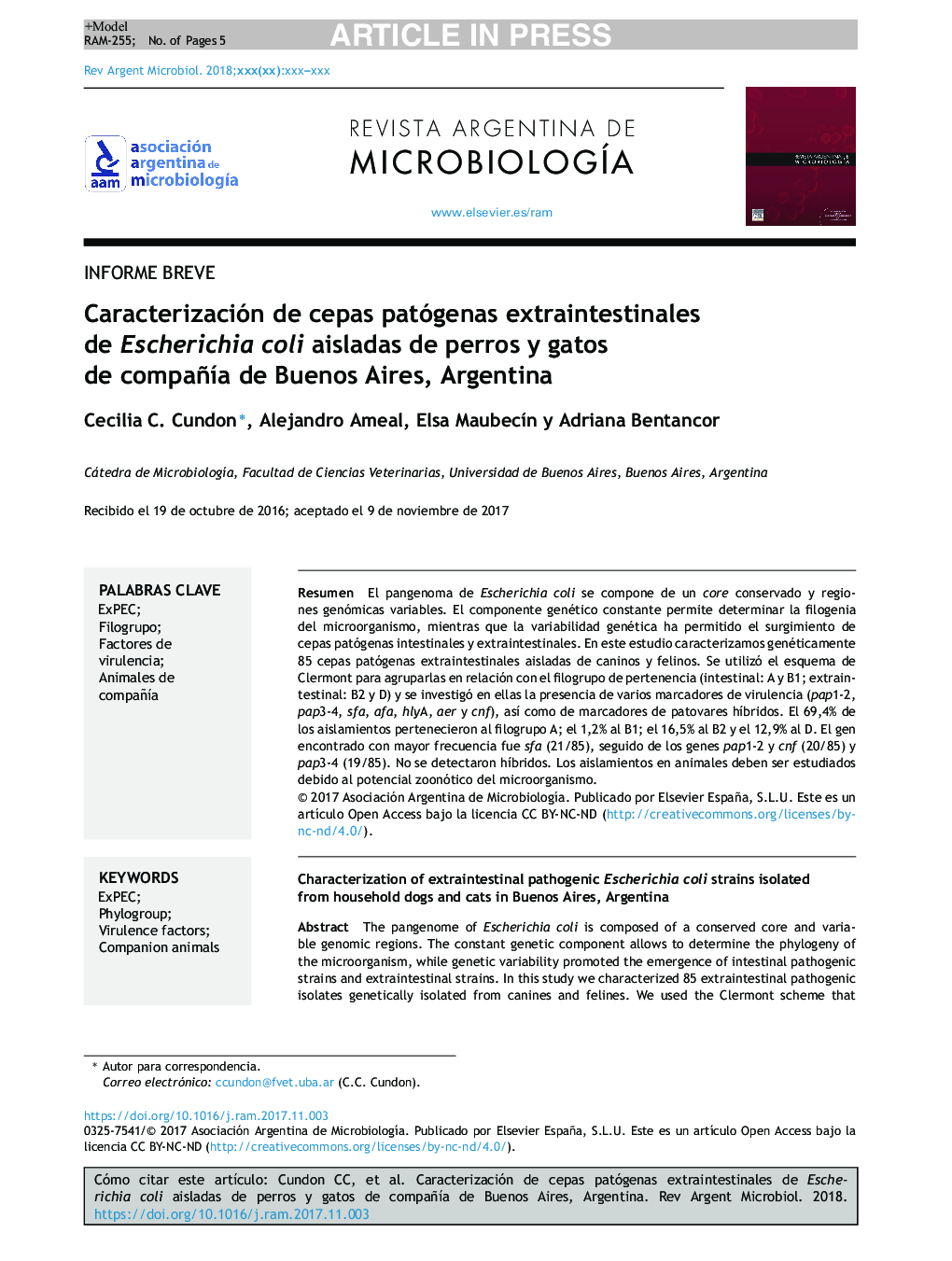| Article ID | Journal | Published Year | Pages | File Type |
|---|---|---|---|---|
| 8844387 | Revista Argentina de Microbiología | 2018 | 5 Pages |
Abstract
The pangenome of Escherichia coli is composed of a conserved core and variable genomic regions. The constant genetic component allows to determine the phylogeny of the microorganism, while genetic variability promoted the emergence of intestinal pathogenic strains and extraintestinal strains. In this study we characterized 85 extraintestinal pathogenic isolates genetically isolated from canines and felines. We used the Clermont scheme that includes intestinal (A and B1) and extraintestinal (B2 and D) phylogroups, virulence markers (pap1-2, pap3-4, sfa, afa, hlyA, aer and cnf) and hybrid pathogens. A percentage of 69.4% of the isolates belonged to phylogroup A; 1.2% to phylogroup B1; 16.5% to phylogroup B2 and 12.9% to phylogroup D. The most commonly found gene was sfa (21/85), followed by pap1-2 and cnf (20/85) and pap3-4 (19/85). No hybrids were detected. Animal isolates should be studied due to the zoonotic potential of the microorganism.
Related Topics
Life Sciences
Immunology and Microbiology
Microbiology
Authors
Cecilia C. Cundon, Alejandro Ameal, Elsa MaubecÃn, Adriana Bentancor,
